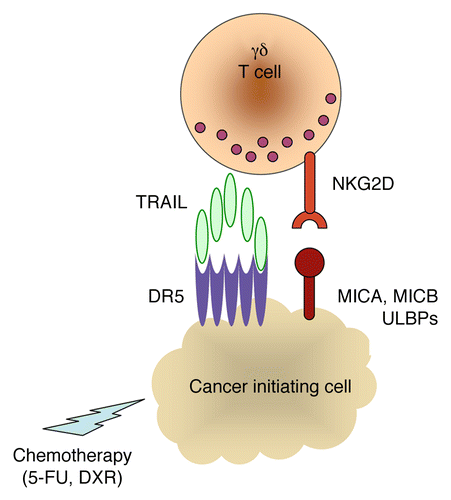Figures & data
Figure 1. Combinatorial antineoplastic effects of conventional chemotherapy and γδ T cell-based immunotherapy. Commonly used chemotherapeutic agents such as 5-fluorouracil (5-FU) and doxorubicin (DXR) stimulate colon cancer-initiating cells to express increased amounts of death receptor 5 (CR5), rendering them susceptible to the TNF-related apoptosis inducing ligand (TRAIL) dependent cytotoxic activity of Vγ9Vδ2 T cells, following the natural killer group 2 member D (NKG2D)-dependent recognition of stress-induced ligands. MIC, MHC class I polypeptide-related sequence; ULBP, UL16-binding protein.
